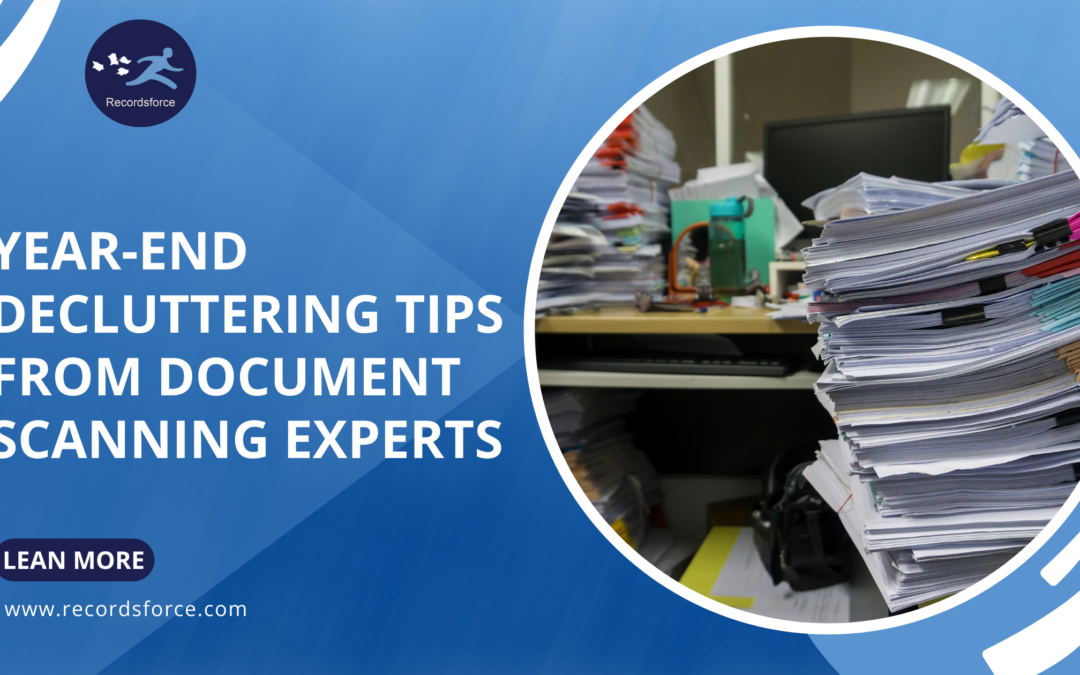As we approach the end of the year, it’s the perfect time to declutter and organize your business documents, ensuring a fresh start for the upcoming year. Document clutter can be overwhelming and inefficient, but with some effective strategies, you can streamline and declutter your paperwork efficiently.
Year-end document decluttering is a proactive step towards an organized and efficient business environment. It streamlines operations, reduces clutter, and ensures better compliance with regulations. Here are some tips:
1. Audit Your Documents
Begin by conducting a comprehensive audit of all documents—physical and digital. Identify what needs retention, what can be archived, and what can be disposed of securely. Prioritize sensitive and confidential information for proper handling.
2. Review Legal and Compliance Documents
Ensure compliance with regulations by reviewing legal documents, contracts, licenses, and permits. Discard outdated or expired documents and retain those essential for compliance purposes.
3. Implement a Document Retention Policy
Develop or update a document retention policy outlining how long specific documents should be retained. This policy should consider legal requirements, industry standards, and internal needs. This FLOH guide can help.
4. Digitize Paper Documents
Convert paper documents into digital format through scanning. This not only saves physical space but also facilitates easy access, sharing, and backup of important documents.
5. Organize Digital Files
Organize digital files into categorized folders with clear naming conventions. Ensure consistency across naming conventions to make searching and retrieval easier for employees. To make it even easier, onboard a document management system to do the organization for you.
6. Secure Data Destruction
Dispose of obsolete or sensitive documents securely. Shred physical papers containing sensitive information and use data wiping software for digital files to ensure data security.
7. Backup Essential Data
Before decluttering or deleting any files, ensure you have backups of critical data. Regularly back up digital documents to prevent loss due to unforeseen circumstances.
8. Collaborate on Cloud Platforms
Utilize cloud storage platforms for document collaboration and storage. This promotes accessibility, version control, and real-time collaboration among team members.
9. Train Employees on Document Management
Offer training to employees on effective document management practices. Educate them on the importance of organizing, labeling, and securing documents.
10. Automate Document Workflows
Implement document management systems or automation tools to streamline workflows. These systems can automate document categorization, approval processes, and archiving.
11. Review and Update Policies
Review existing document management policies and update them as needed. Incorporate lessons learned and best practices from the year to improve document handling processes.
12. Plan for the New Year
As you declutter and organize documents, use the insights gained to plan for document management strategies in the upcoming year. Set goals for improved efficiency and compliance.
By following these decluttering tips, businesses can streamline their document management processes, safeguard sensitive information, and pave the way for a more organized and productive year ahead. A systematic approach to document decluttering not only optimizes efficiency but also establishes a strong foundation for businesses to thrive in the coming year.

